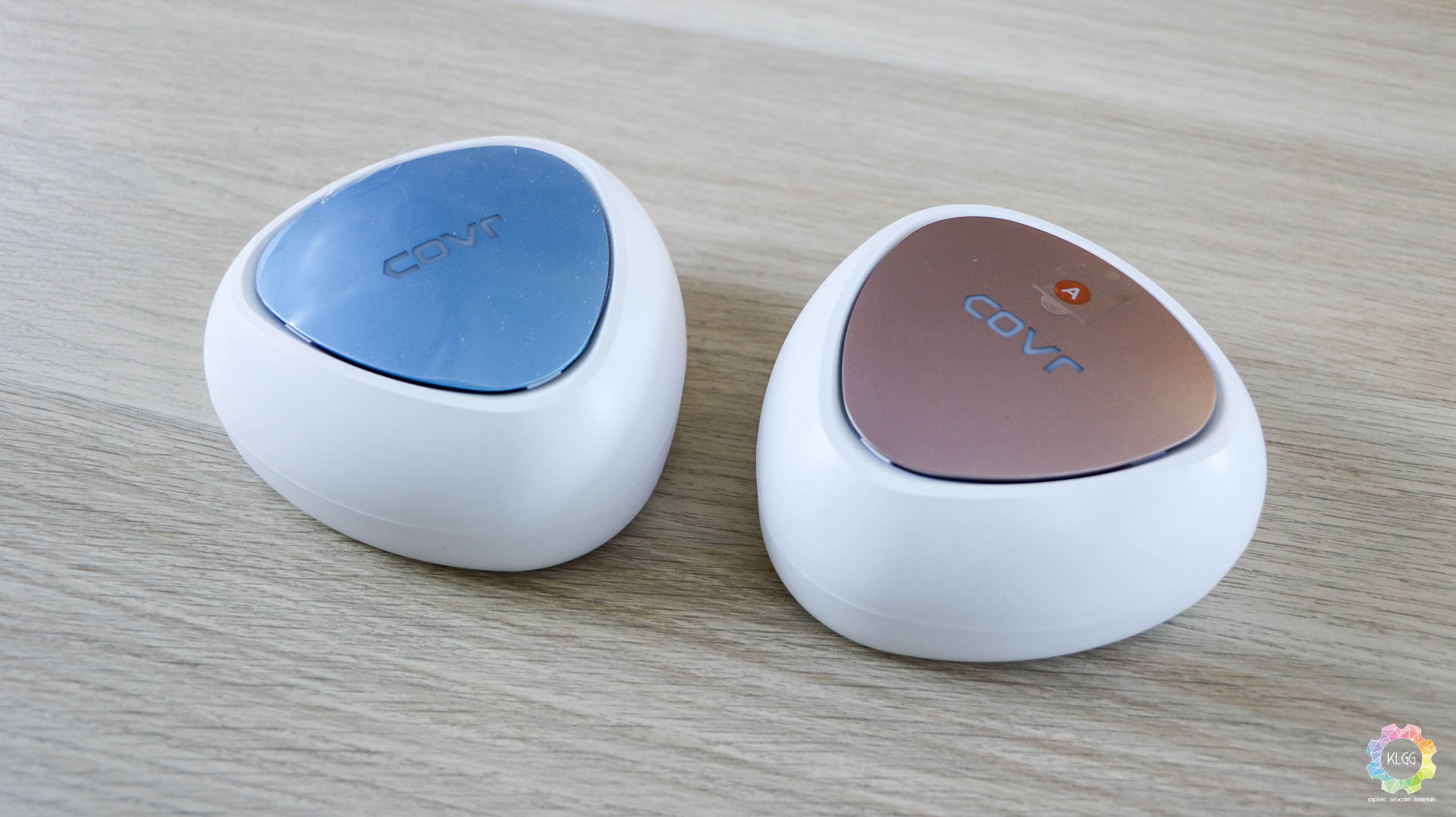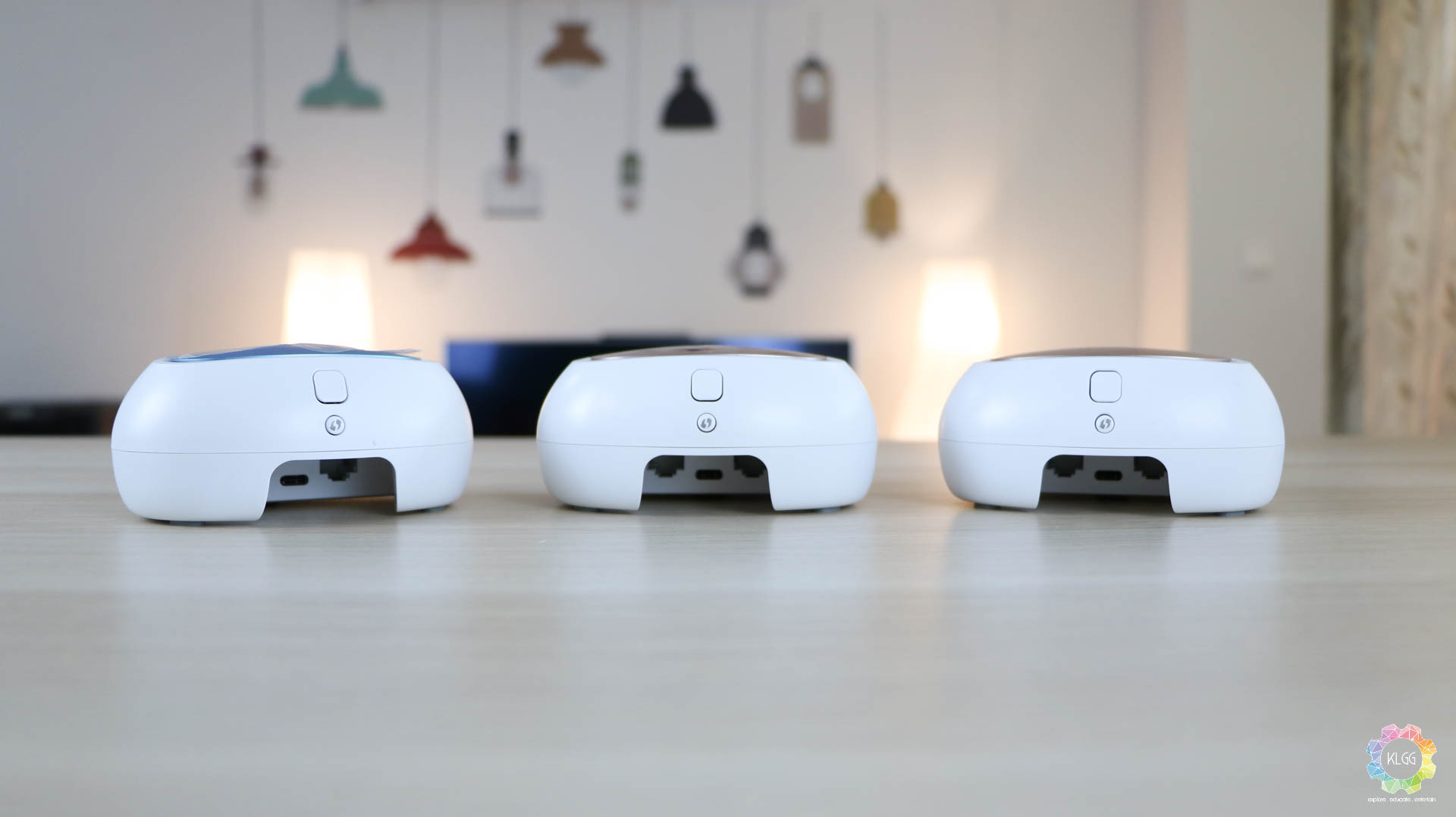Mesh routers have become popular for large homes due to its simplicity and form factor, it is particularly useful if your entire household depend on WiFi to get access to the Internet, while requiring an extensive coverage to enjoy the best of your Internet connection. D-Link has kindly passed us the COVR-C1203 for our review, a stylish looking entry-level mesh system that costs RM799, which isn’t cheap as compared to a standard AC1200 router, but most importantly, can it fix WiFi coverage woes?
Hardware and Design

Like other mesh systems, the COVR-C1203 comes with one main node that connects to your Internet gateway supported by two other nodes. I like the fact that the nodes are powered by a single USB-C cable over a 5V3A output, which you can technically use any USB adapters that support such output and hook up your own USB-C cable if you want to.
I’m not a fan of the two-pin European adapter that D-Link provides out of the box, as it blocks other socket outlets if I plug it into a multi-gang socket or a dedicated power outlet, but they are thankfully long enough that you won’t need an extension.

Setup and Software
Back then when I reviewed the higher end DIR-895L, I complained the lack of certain configuration on the router’s management software and unfortunately, the COVR-C1203’s software is even more limited.
Performance
Using a free WiFi Analyzer app, I realized that the router did a pretty good job of switching between 2.4GHz and 5GHz as I move around different spots in my house, though oddly there has been a couple of times that the WiFi network would suddenly disconnect momentarily when I’m connected at the same spot for more than an hour, otherwise in most cases I would be able to achieve around 40-50Mbps of download speed on dead spots, it is an obvious improvement from having WiFi signals broadcasted single handedly by my very own TP-Link Archer C5400 router.
As for fixed LAN connection, the supporting nodes can keep up to its maximum download speed with a reasonably fast 6-7ms ping response when tested using Speedtest.net, despite being a slight delay with my usual 2-3ms ping when connected directly to my original router.
Verdict
The D-Link COVR-C1203 is a good mesh router to start off if you are on a budget to extend your home’s WiFi network coverage, but you’ll be trading off some networking features such as VPN Server and separate network frequency configuration, it also cannot serve as a coverage extender to any of the company’s existing routers. At RM799, there’s absolutely no excuse not to invest in one if you own a huge home that requires good WiFi coverage, though personally I won’t be depending on this for heavy file transfers, but at least it does help to keep my WiFi connection stay alive wherever I am in the house.
The Good
- Good automatic band switching performance
- Powered using USB-C
- Swappable color plates for easy identification
- Good for Internet connections below 100Mbps
The Not so Good
- Occasional disconnects
- Limited router software features


